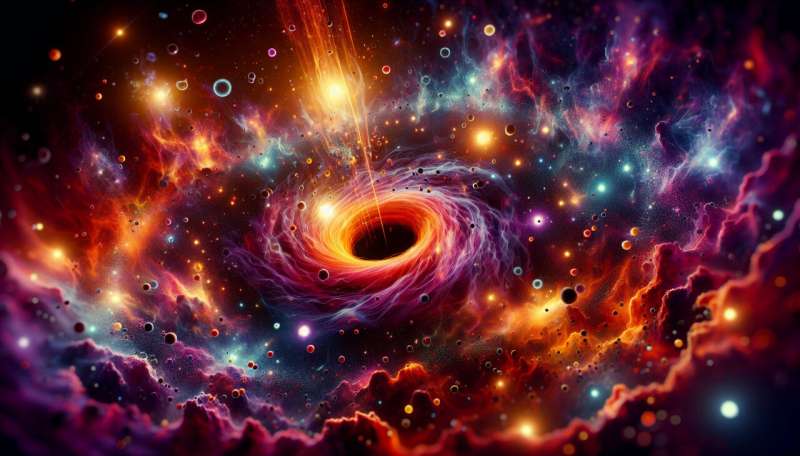
December 4, 2024 by University of Amsterdam
Collected at: https://phys.org/news/2024-12-quark-physicists-framework-amount-quarks.html
The quarks that make up the nuclei of all atoms around us are known to “mix”: the different types of quark occasionally change into one another. The amounts in which these processes happen are not very well known, though—and the theoretical values don’t even add up to 100%. UvA-IoP physicist Jordy de Vries and colleagues from Los Alamos, Seattle, and Bern have now published work that takes a step towards solving these mysteries.
All good things come in threes. The Standard Model of particle physics takes this motto to heart: it contains three so-called generations of elementary particles. Take the quarks as an example. In addition to the pair of quark types known as “up” and “down,” which make up the core of atomic nuclei, there exist two additional quark pairs: “charm” and “strange,” as well as “top” and “bottom.” Together, these six types of quarks are known as the six quark flavors.
The Standard Model predicts that one quark flavor can transmute into another, a phenomenon called quark mixing, but the model does not predict how often different transmutations happen. In fact, the current state-of-the-art analysis indicates that something is afoot: the probabilities of all mixings do not add up to 100%. What is going on? Could this be a signal of new physics outside of the Standard Model?
To answer this question, UvA-IoP physicist Jordy de Vries and colleagues from Los Alamos, Seattle, and Bern have developed a new framework and performed associated calculations to very precisely determine the amount of mixing between up and down quarks, for which the effect is strongest. The work was recently published jointly in Physical Review Letters and as an Editor’s Suggestion in Physical Review C.
Taming the uncertainty
As input for the calculations, the physicists use precise measurements of radioactive decay processes known as nuclear beta decays. The most accurate determination of the up-down quark mixing comes from so-called superallowed beta decays, occurring across the chart of nuclear isotopes. “Superallowed” means that the involved nuclei have no spin and are therefore easier to describe theoretically.
Nevertheless, the calculation of the amount of mixing from the extremely precise data suffers from a theoretical uncertainty due to the subtle dance between the three fundamental forces of nature that are involved in the process: the strong nuclear force, the electromagnetic interaction, and the weak process that causes the radioactive decay.
The new framework was designed to track this interplay and tame the theoretical uncertainty. It led the physicists to uncover effects involving the weak interactions between the constituents of the nuclei that had not been considered before.
These effects currently dominate the uncertainty in the computations. In the near future, building on this work and on advanced many-body nuclear calculations, the uncertainties will be brought under control, thus opening the way to uncover possible footprints of new physics in nuclear processes.
More information: Vincenzo Cirigliano et al, Radiative Corrections to Superallowed β Decays in Effective Field Theory, Physical Review Letters (2024). DOI: 10.1103/PhysRevLett.133.211801
Vincenzo Cirigliano et al, Ab initio electroweak corrections to superallowed β decays and their impact on Vud, Physical Review C (2024). DOI: 10.1103/PhysRevC.110.055502. On arXiv: DOI: 10.48550/arxiv.2405.18464
Journal information: Physical Review Letters , Physical Review C , arXiv

Leave a Reply